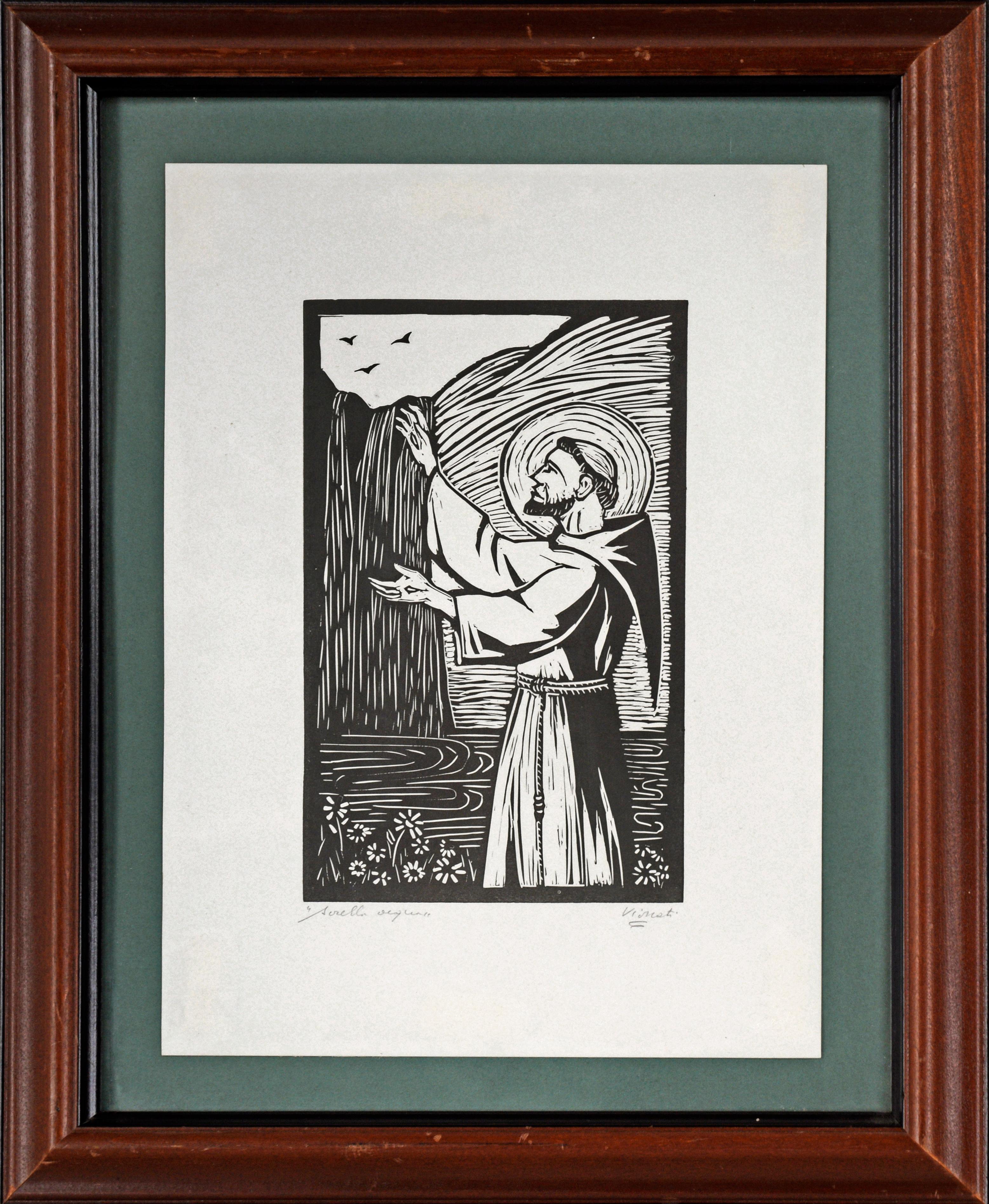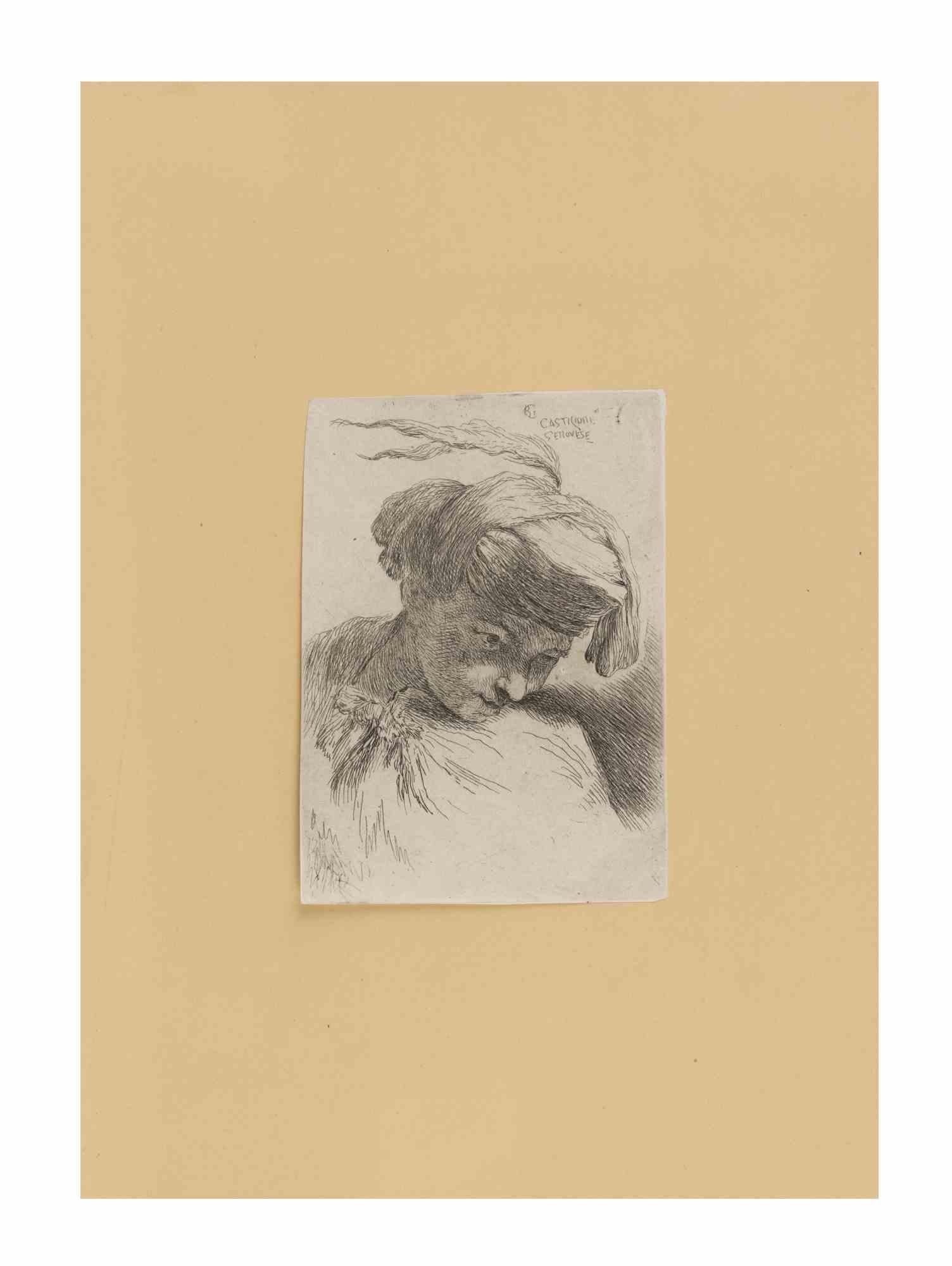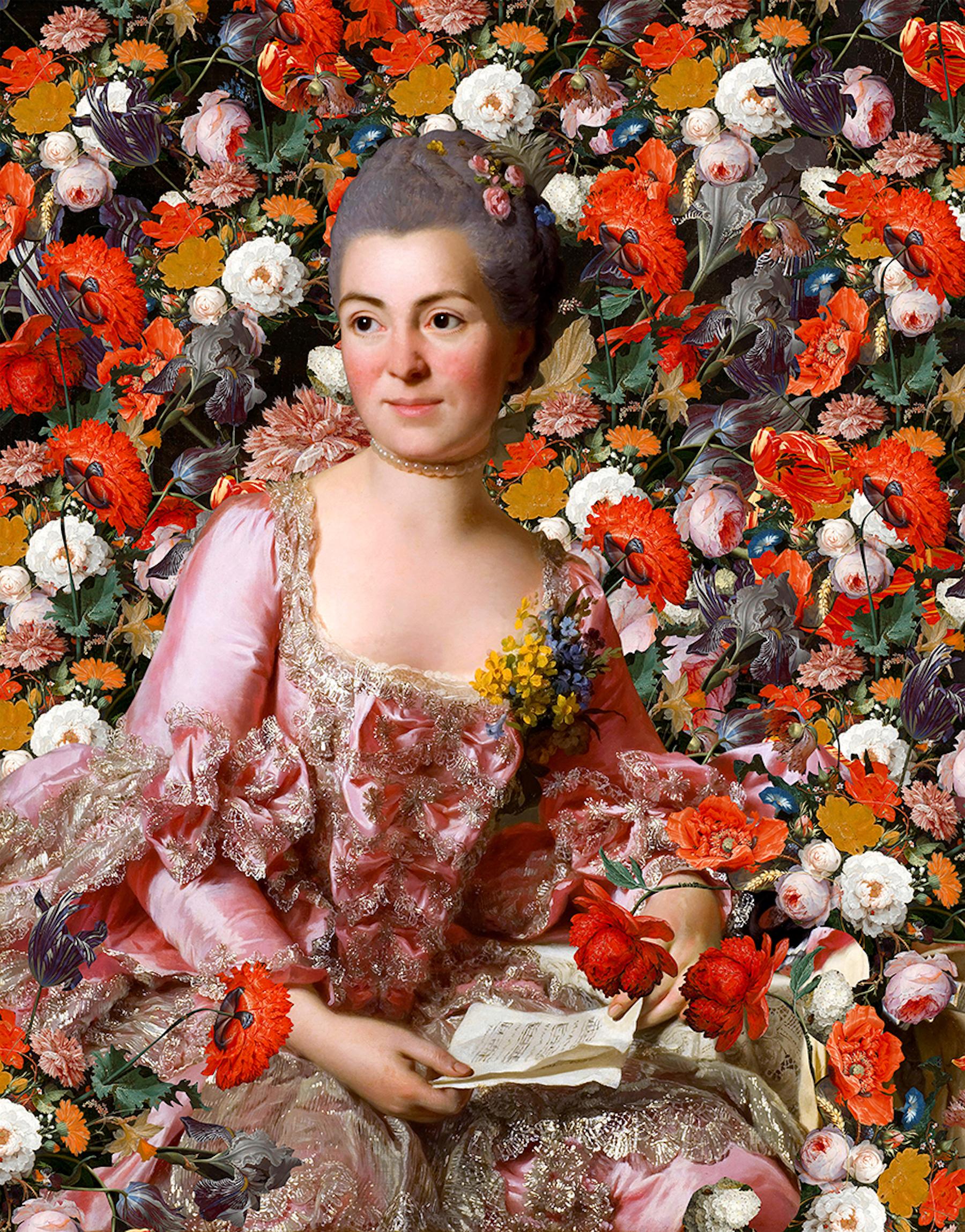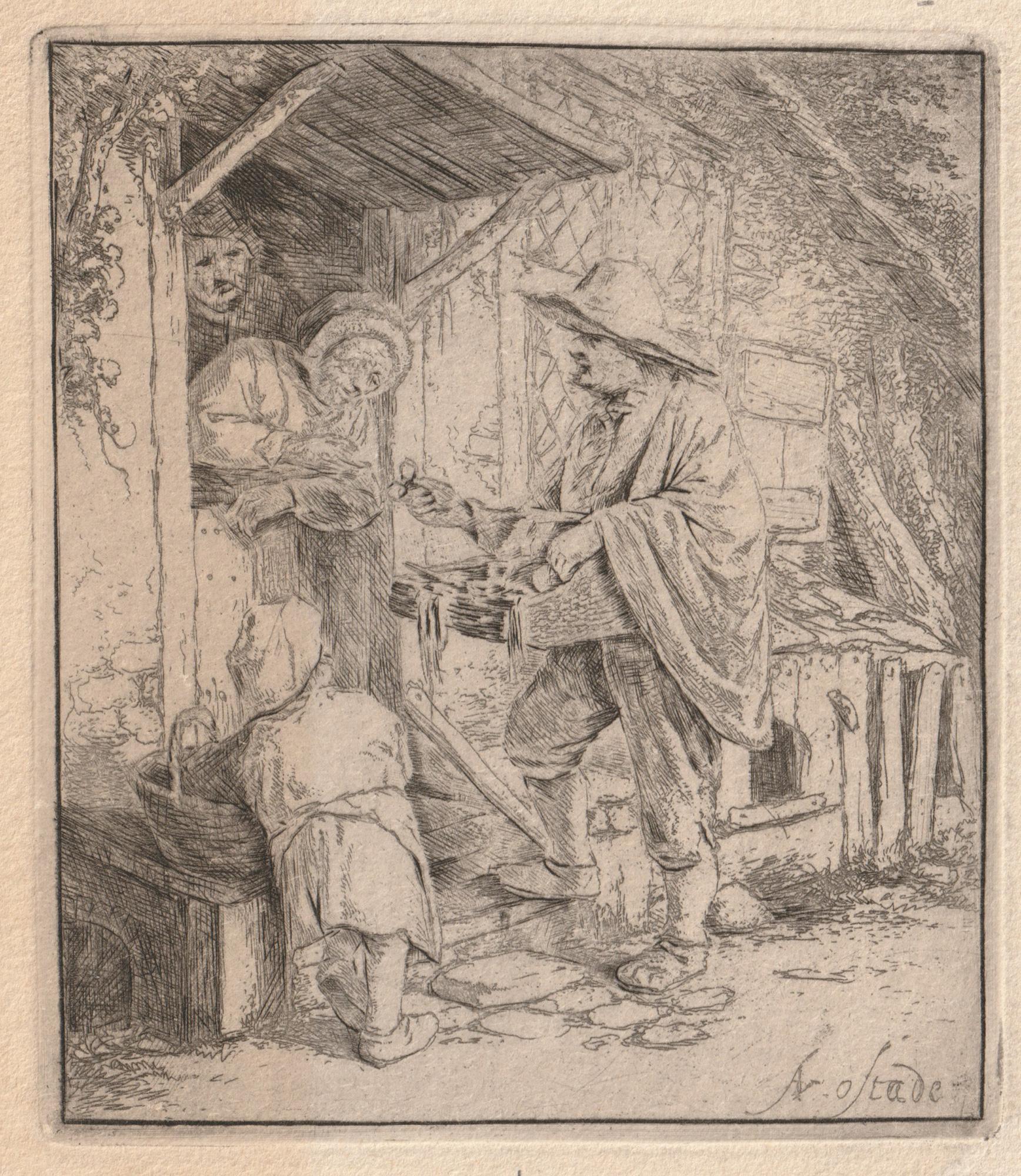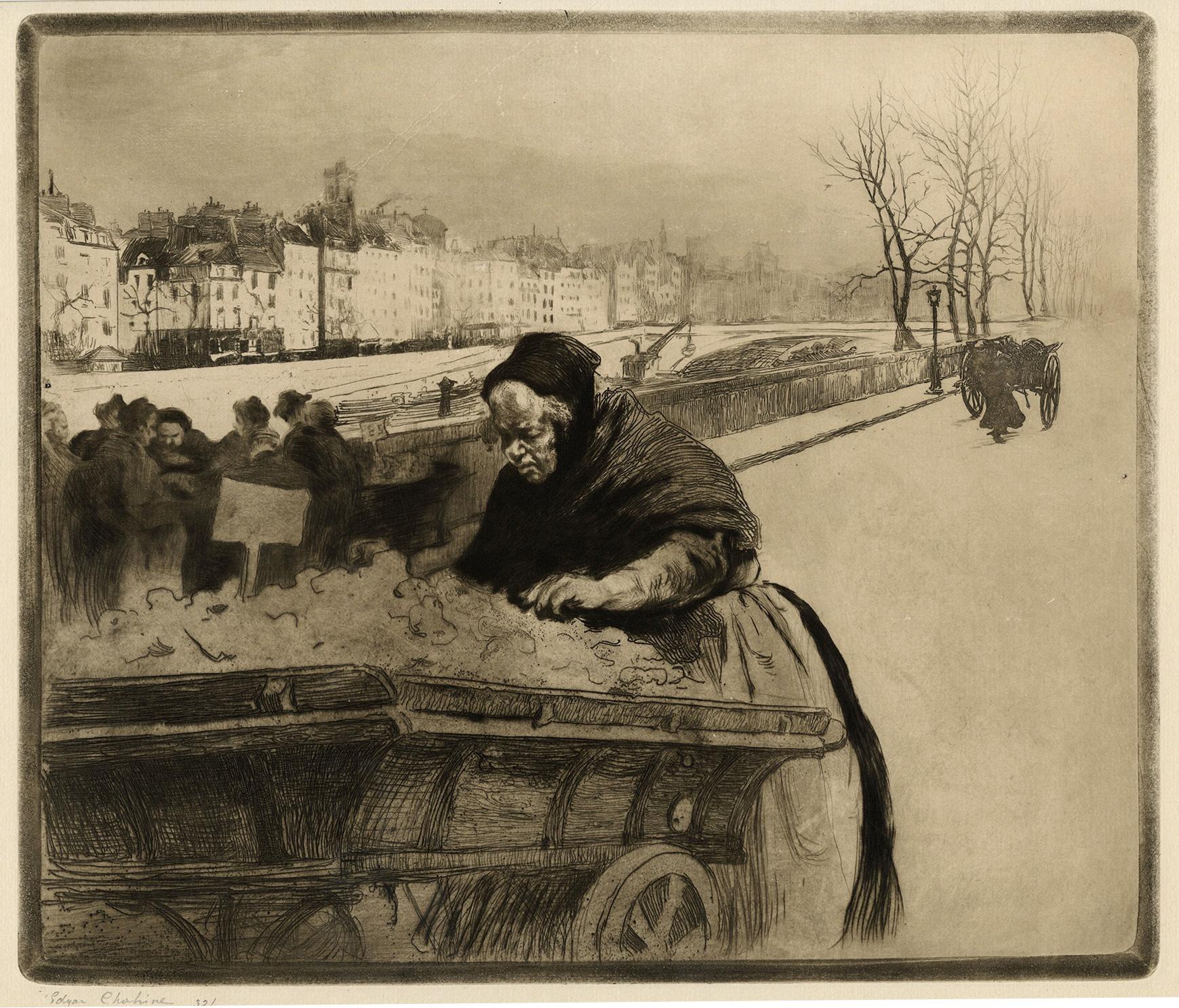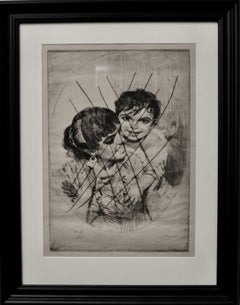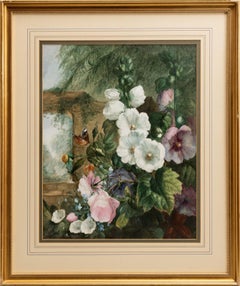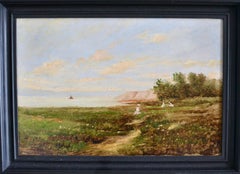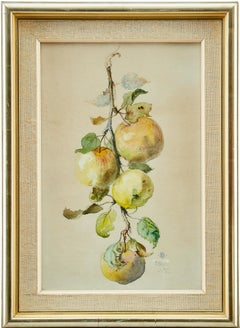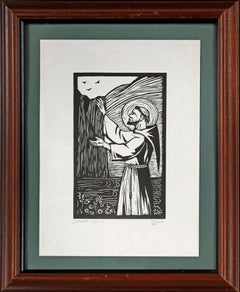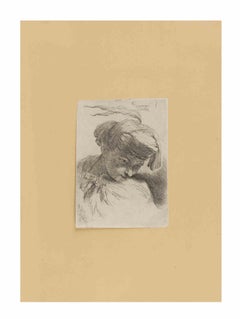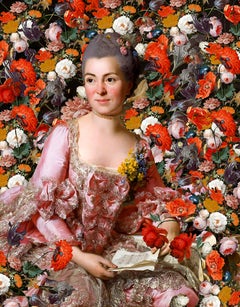Items Similar to The Archer, a Moor holding a Bow
Want more images or videos?
Request additional images or videos from the seller
1 of 12
Johannes VisscherThe Archer, a Moor holding a Bow17th/18th century
17th/18th century
About the Item
“The Black Archer” is a striking 17th-century Dutch engraving, executed by Johannes (Jan) de Visscher (c. 1633–c. 1712). It reproduces a captivating design “drawn from life” by his elder brother, Cornelis Visscher (1629–1658), and was later published by Justus Danckerts (1635–1701) . The work bears a poetic Dutch inscription: “Dus heeft den Moor met pÿl en boogh / Den vyandt of het wilt in’t oogh”, which loosely translates to: “Thus the Moor lifts his arrow and bow / his enemy or the wild beast in sight”
The print presents a half-length portrait of a young Black man—often identified as a Moor—holding a bow with arrow poised, his gaze cast over his shoulder, attentive and alert.
The facial features are rendered with individuality rather than stereotyping, suggesting a genuine sitter rather than an imagined “type.” Indeed, the explicit inscription “ad vivum deliniavit” (“drawn from life”) underscores Cornelis’s commitment to capturing a real person.
During the Dutch Golden Age, representations of Black individuals, particularly as dignified portrait subjects, were exceedingly rare. They were more commonly relegated to decorative or allegorical roles. That this is a standalone portrait of a Black man—depicted with solemn intensity and agency—speaks volumes about its exceptional status in 17th-century European prints
Cornelis Visscher was renowned for his technical mastery and ability to draw live models with charcoal before translating them into prints.
His early death in 1658 leaves us uncertain about the sitter’s identity. However, some scholars speculate the print may date from the 1650s, a time when African individuals were increasingly present in the Netherlands, often through the transatlantic slave trade—via direct routes or via the Dutch recapture of Brazil in 1654.
The image offers no literary or mythological context, performing instead an early exploration of what would later be called the "noble savage" archetype—an engagement that predates most visual representations of Black subjects in European art.
The engraving’s technical pedigree is equally notable: it survives in multiple states; the version engraved by Johannes bears the printed mark “J. de Visscher sculpsit,” and features the publisher’s imprint “Justus Danckerts Excudit”
In conclusion, this print is remarkable on several fronts: it is a rare, dignified, and individualized portrait of a Black subject from the 17th century, drawn from life by Cornelis yet beautifully engraved by Johannes. Presently displayed in an early 19th‑century Swedish birch frame.
The full inscription on the plate is: “Dus heeft den Moor met pÿl en boogh / Den vyandt of het wilt in’t oogh.”, “C. de Visscher ad vivum deliniavit”, “J. de Visscher sculpsit,” and “Justus Danckerts Excudit,”
- Creator:Johannes Visscher (1633 - 1692, Dutch)
- Creation Year:17th/18th century
- Dimensions:Height: 12.8 in (32.5 cm)Width: 10.83 in (27.5 cm)Depth: 0.79 in (2 cm)
- Medium:
- Movement & Style:
- Period:
- Condition:In good condition with some minor staining and fading.
- Gallery Location:Stockholm, SE
- Reference Number:1stDibs: LU2608216457942
About the Seller
5.0
Vetted Professional Seller
Every seller passes strict standards for authenticity and reliability
1stDibs seller since 2023
16 sales on 1stDibs
Typical response time: <1 hour
- ShippingRetrieving quote...Shipping from: Stockholm, Sweden
- Return Policy
Authenticity Guarantee
In the unlikely event there’s an issue with an item’s authenticity, contact us within 1 year for a full refund. DetailsMoney-Back Guarantee
If your item is not as described, is damaged in transit, or does not arrive, contact us within 7 days for a full refund. Details24-Hour Cancellation
You have a 24-hour grace period in which to reconsider your purchase, with no questions asked.Vetted Professional Sellers
Our world-class sellers must adhere to strict standards for service and quality, maintaining the integrity of our listings.Price-Match Guarantee
If you find that a seller listed the same item for a lower price elsewhere, we’ll match it.Trusted Global Delivery
Our best-in-class carrier network provides specialized shipping options worldwide, including custom delivery.More From This Seller
View AllMothers Joy III, also called Maternal Delight III
By Anders Zorn
Located in Stockholm, SE
Maternal Delight III, or Mothers Joy III, (In Swedish Modersglädje III) by Anders Zorn depicting a young woman lovingly playing with her child. A small amusing detail is the small child face visible on the lower left side, just outside the oval. This is an extremely rare etching and is one of two or possibly three known in existence of a so called cancellation proof. A cancellation proof etching of the Maternal Delight III is in the Boston Public Library Collection, USA.
Signed Zorn in the plate. When Zorn decided that the vey limited number of prints were all done he took his burin, (the steel cutting tool used in engraving also, back in history, called graver), and made cross hatched lines across the figures on the original plate, after which he made a couple of after proofs or cancellation proofs and the present etching is one of them. This gives the present work a special and interesting image of one of Zorns best and rarest etchings. Created in London 1883, the first year he made etchings.
Etching 276 x 406mm
Sheet circa 33,5 x 48cm
Literature
Asplund 6. Delteil. 5. Hjert & Hjert 6. Lidbeck 6.
Unfortunately some reflexes in the photos.
Anders Zorn (1860-1920) was a Swedish artist who attained international success as a painter, sculptor, and etching artist. He was to become one of Swedens foremost artists ever. No technique was foreign to him, he worked equally well with watercolors, wash technique or oil painting. The etching technique also attracted this virtuoso and the etchings contributed greatly to his success.
Between 1875 to 1880, Zorn studied at the Royal Swedish Academy of Arts in Stockholm, where he amazed his teachers with his talent. Members of the Stockholm Society approached him with commissions. In early 1881, Zorn met Emma Lamm, whose background was quite different from his. Emma Lamm was from a wealthy Jewish merchant family. She was interested in art and culture and, after a long engagement, they were married in 1885.
During the 1880s Zorn traveled extensively, to London, Paris, the Balkans, Spain, Italy, and the United States. In the 1890s when he was in Paris, he spent much time with Albert Edelfelt. He quickly became an international success and one of the most highly regarded painters of his era. In the beginning of Zorns career, it was primarily his skill as a portrait painter that gained him international acclaim, based principally upon his incisive ability to depict the individual character of his model, he came to portray many great people including three American Presidents: Grover Cleveland, William H. Taft, and Theodore Roosevelt.
Zorn also depicted Swedish dignitaries, for example King Oscar II in 1898, King Gustaf V in 1909, Queen Sophia in 1909, Prince Eugen in 1891, fellow artist Carl Larsson in 1897 and August Strindberg in 1910.
In the late 1880s, Zorn began working in the genre that is probably his hallmark for the general public, nude studies in the open air. Zorn had long been fascinated by the movements of water and the reflections of light on the water surface. Now Zorn chose to place a nude model by or in the water, with the aim of depicting people in nature.
When Zorn started the art of etching, he developed a technique with Rembrandt as a model, where he built up the motif with bursts of lines. The first etching was created in London in 1883, the same year as our Maternal Delight. Axel Herman Hägg, then active in London, was Zorn's teacher in this special technique. Hägg was the person Zorn depicted in his first etching. Zorn quickly mastered the etching technique itself and a unanimous art expert was able to conclude early on that Rembrandt had now found his equal.
At the age of 29, he was made a Chevalier de la Légion d'honneur at the Exposition Universelle 1889 Paris World Fair.
Zorn's reputation as an etcher spread across the world. Soon he could find his etchings in the major world metropolises in Europe and the USA. Zorn produced 289 different etchings, including portraits, genre studies and nude studies.
The motifs on Anders Zorn's graphic sheets are most often based on his own paintings, as ours, which is based on a watercolor he made in 1882 on his first trip to Spain. Even during Zorn's lifetime, his etchings were considered to be artistically superior to his paintings. As a result, his graphics quickly became sought after on the international art market. He was compared to Rembrandt, who as mentioned earlier was Zorn's great role model in the art of etching. Zorn was able to combine the old technique with his personal form of impressionism and the temporary and everyday with the universal. On the printing plates, one can study his outstanding etching technique, his characteristic play with parallel lines drawn in different directions, with varying degrees of force and intensity.
Zorn's art made him wealthy and he was thus able to build up a considerable collection of art. In their joint will, Anders and Emma Zorn donated their entire holdings to the Swedish State.
Some of his most important works can be seen at the National Museum of Fine Arts in Stockholm. Other museums holding major works by Zorn include the Musée d'Orsay in Paris, the Metropolitan Museum of Art in New York, and the Museum of Fine Arts, Boston. The Zorn Collections located in Mora and Garberg, Älvdalen, consist of four museums dedicated to the life and works of Anders Zorn. Shown there are extensive works of Zorn and his collected art.
The Bellman Prize (Bellmanpriset) is a literature prize for "an outstanding Swedish poet", every year awarded by the Swedish Academy. The prize was established by Anders Zorn and his wife Emma in 1920.
The motif: The present etching is based on a central and important work from Zorns first important trip to Spain, 1881-1882. After visiting Madrid and Seville, Zorn set off for Cádiz, tempted by the sea and the city’s women who were reputed to be the most beautiful in all of Spain.
In Maternal Delight, also translated to Mothers Joy and Mothers Pride...
Category
1880s Other Art Style Portrait Prints
Materials
Paper
Hollyhocks and Roses in a Garden with Butterfly
Located in Stockholm, SE
This is a beautiful and highly decorative watercolor painting, featuring a charming garden scene filled with pink and white hollyhocks alongside blooming roses. Nestled among the del...
Category
Late 19th Century Naturalistic Still-life Drawings and Watercolors
Materials
Paper, Watercolor
Landscape with Women Picking Flowers, Possibly on Island of Mön
Located in Stockholm, SE
A fine small plein air study of three women picking flowers on the meadow next to white cliffs and sea. In the horizon where the sky ends, the contours of mainland is visible as a sh...
Category
Late 19th Century Naturalistic Landscape Paintings
Materials
Paper, Oil, Cardboard
Tree Branch With Apples, Watercolor, 1895
By Otto Strandman
Located in Stockholm, SE
A Branch with Apples, watercolor and gouache on paper by Swedish artist Otto Strandman (1871–1960). The composition features a delicately rendered branch with green and reddish apple...
Category
1890s Naturalistic Still-life Paintings
Materials
Paper, Watercolor, Gouache
Composition with Head
Located in Stockholm, SE
A vibrant composition or portrait in a constructivist style by artist Lars Englund (born 1933), signed and dated "LED 56" (1956). This is an early work by the artist in which he has ...
Category
1950s Constructivist Figurative Paintings
Materials
Paper, Crayon, Pastel, Mixed Media
Moonlight Scene in Venice with Gondola
Located in Stockholm, SE
Watercolor painting depicting a nocturnal scene of Venice, featuring a gondola gliding slowly through the water under a full moon, by Karl Bergquist. Signed and dated "K Bergquist Ve...
Category
1920s Other Art Style Landscape Drawings and Watercolors
Materials
Paper, Watercolor
You May Also Like
"Sister Water" - St Francis of Assisi Linocut
Located in Soquel, CA
"Sister Water" - St Francis of Assisi Linocut
Wood Black pring of St Francis by Italian artist (printer of Assisi) Gastone Vignati (Italian, 20C)...
Category
1990s Baroque Figurative Prints
Materials
Paper, Ink, Linocut
$316 Sale Price
20% Off
Half-length portrait of a man with beard - A Rembrandt of the 18th century -
Located in Berlin, DE
Johann Friedrich Bause (1738 Halle a. d. Saale - 1814 Weimar). Half-length portrait of a man with beard and cap after a drawing by Christian Wilhelm Ernst Dietrich. Etching and coppe...
Category
1780s Baroque Figurative Prints
Materials
Etching
Figure with Their Head Leaning Against...- Etching by Castiglione - 17th Century
By Giovanni Benedetto Castiglione
Located in Roma, IT
Etching realized by Castiglione (Il Grechetto) in 1640 ca. From the Series Small Studies of Heads
Good condition.
Ref. Bartsch 46.43
Category
17th Century Baroque Portrait Prints
Materials
Etching
Beauté du XVIIIe siècle 1, Contemporary Classical Artwork, Portait Art
By Agent X
Located in Deddington, GB
Beauté du XVIIIe siècle 1 by Agent X [2022]
Please note that insitu images are purely an indication of how a piece may look
"Beauté du XVIIIe siècle 1" depicts a Baroque style, flor...
Category
21st Century and Contemporary Baroque Portrait Prints
Materials
Canvas, Digital
The Spectacle Seller
By Adriaen Jansz van Ostade
Located in Middletown, NY
Etching and drypoint on cream laid paper, 4 x 3 3/8 inches (102 x 86 mm), 1/4 inch margins. Signed in the plate, lower left corner. The 3rd state (of 6), after the rounding of the pl...
Category
Mid-17th Century Old Masters Figurative Prints
Materials
Drypoint, Laid Paper, Etching
La Marchande des Quatres-Saisons
By Edgar Chahine
Located in Middletown, NY
Etching with drypoint on cream wove paper, 11 3/4 x 13 3/4 inches (297 x 347 mm), full margins. Signed in pencil and numbered 32/40, lower margin. Minor mat tone and several small lo...
Category
Early 20th Century Post-Impressionist Portrait Prints
Materials
Handmade Paper, Rag Paper, Drypoint, Etching
